Episcopal City of Albi
By Laura
What is the Episcopal City of Albi?
The UNESCO Episcopal City of Albi is a small but impressive area with a rich medieval and Renaissance past. Located along the banks of the Tarn River in southwest France, it is nicknamed ‘la rouge’ due to the local brick colour used in its buildings and monuments.
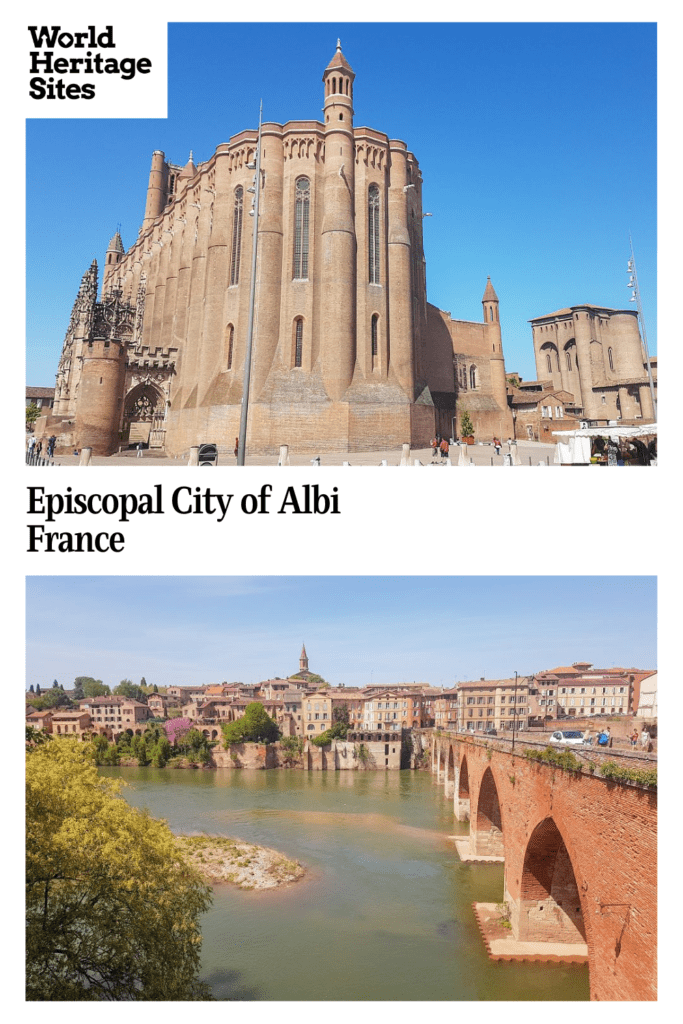
Disclosure: This article contains affiliate links. Making a purchase through an affiliate link will mean a small commission for this website. This will not affect your price.
The imposing fortress-like cathedral, the Sainte‑Cécile, towering over the riverbank, is the crown jewel of the city. Standing next to the cathedral is the fortified Bishop’s palace, Le Palais de la Berbie. It now houses the largest collection of works by Albi-born painter Henri Marie Raymond de Toulouse-Lautrec-Monfa, a post-impressionist painter. The Pont Vieux (Old Bridge) was built in 1035 and is thought to be one of France’s oldest bridges that is still in use.
Albi has a turbulent history through the religious conflicts of the Middle Ages, making it a fascinating destination. During the 12th century, Albi was ruled by the Count of Toulouse under appointment by the King of France. Catharism was strong in the region, a form of Christianity that the Catholic church did not recognize. Pope Innocent III began the Albigensian Crusade (a.k.a. the Cathar Crusade), a military campaign to eradicate Catharism in southern France. The crusade spanned two decades (1209-1229) and saw religious and political power shift throughout the region.
Why is the Episcopal City of Albi a UNESCO World Heritage site?
According to UNESCO, ‘The Episcopal City of Albi forms a coherent and homogeneous ensemble of monuments and quarters that has remained largely unchanged over the centuries.” It is “a high-quality urban landscape that possesses high visual coherence because of the generalised and enduring use of local fired brick.”
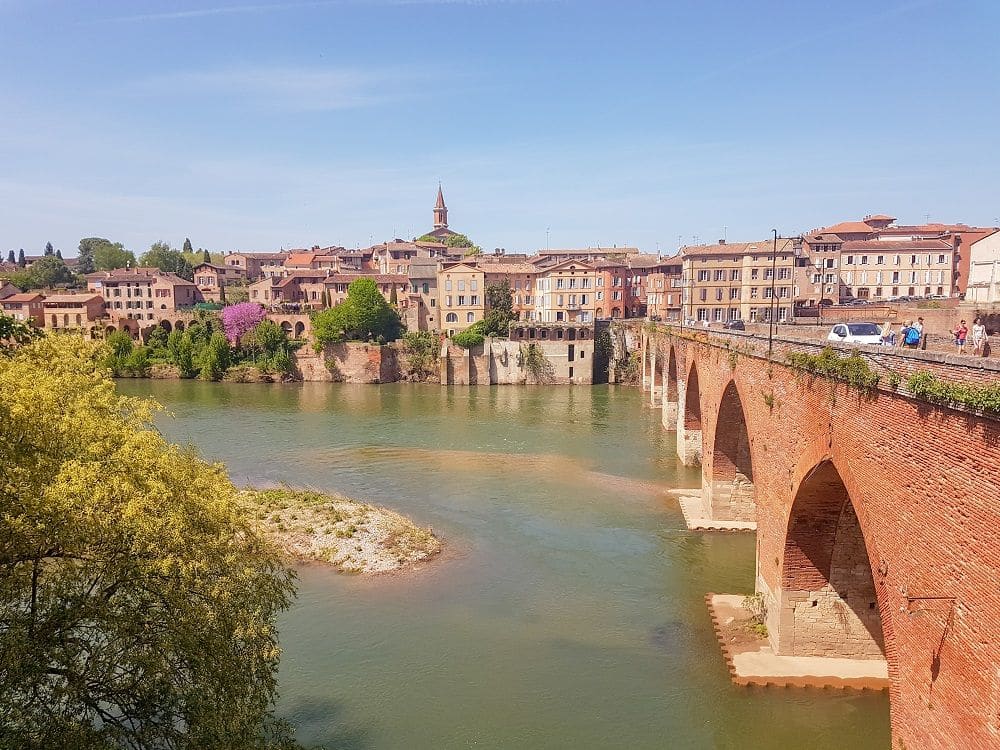
What can you expect on a visit to Albi?
Wander through a maze of narrow cobbled streets, small squares surrounded by medieval half-timbered houses and unique red brick architecture. There are many things to discover in this charming town.
The gothic-style Sainte Cécile Cathedral is at the centre of the episcopal city and is said to be the largest brick-built edifice in the world. It is free to enter, and visitors can learn about its tragic past and the reasons behind its unique fortress-like design. The interior is decorated with sculptures, art, stained glass windows and large bright frescos. There is a fee to enter the grand choir.
Next to the cathedral is the Toulouse-Lautrec Museum, inside the Palais de la Berbie. The artist was born in Albi and is more popularly known for the 31 posters he designed for the Moulin Rouge. The museum also boasts some perfectly-groomed gardens overlooking the Tarn. The gardens alone are worth the entry fee.
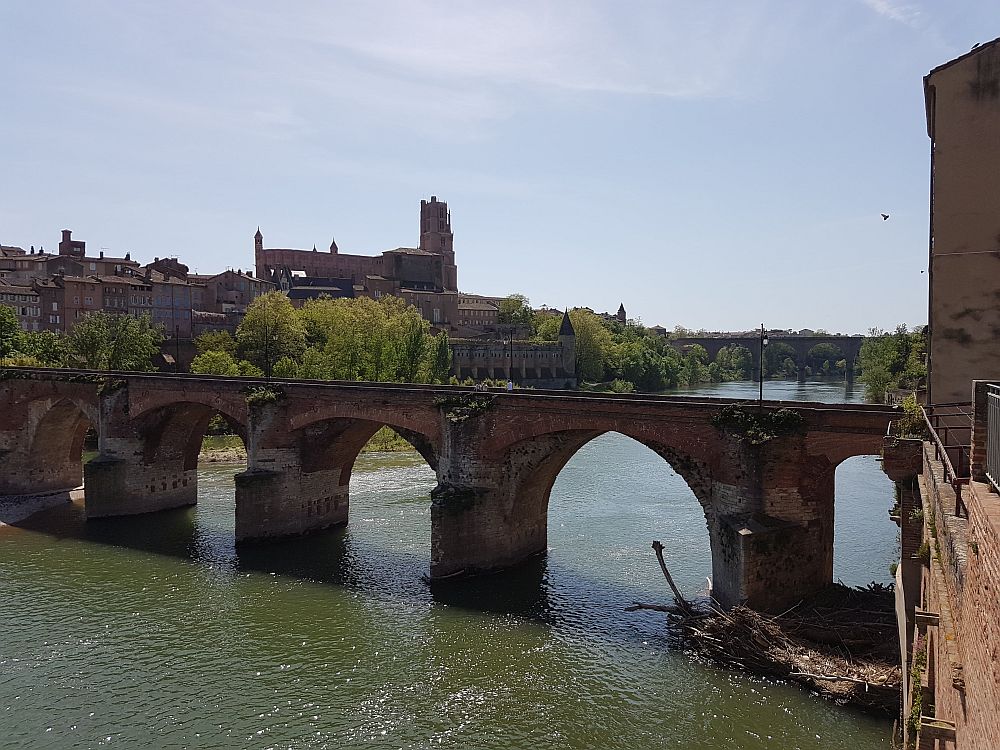
Is Albi worth visiting?
Yes, the Occitanie region is rich in sights and beautiful medieval villages, and Albi makes it onto many visitor itineraries. Travelers interested in architecture, history and the arts will find Albi fascinating. However, the scenery and charm make this town a gem for nature lovers too.
Visitors typically spend one full day exploring the city and its sights. However, the main UNESCO sites (Saint Cécile Cathedral, Le Palais de la Berbie and Pont Vieux) can be enjoyed in half a day.
Book your accommodations in Albi here.
Tips for visiting Albi
The centre isn’t too big so exploring on foot is an option to soak up all of the sights and atmosphere of this charming French town. The tourist office offers three free heritage walking routes. They run through the heart of the city and include all of the main sights. These are self-guided tours, and maps are downloaded via an app or picked up at the tourist office. Albi also has the Echappée Verte walking trail. This route runs alongside the riverbank and offers rewarding views and a different perspective on the city above.
Other fantastic ways to explore the city are to go on a guided tour, hop on the tourist train, take to the waterways on a traditional flat-bottomed boat or ride in a hot-air balloon.
Albi is conveniently situated between a whole series of World Heritage Sites. Within Occiatania you could also visit Canal du Midi, the Fortified City of Carcassonne, and the Causses and the Cévennes.
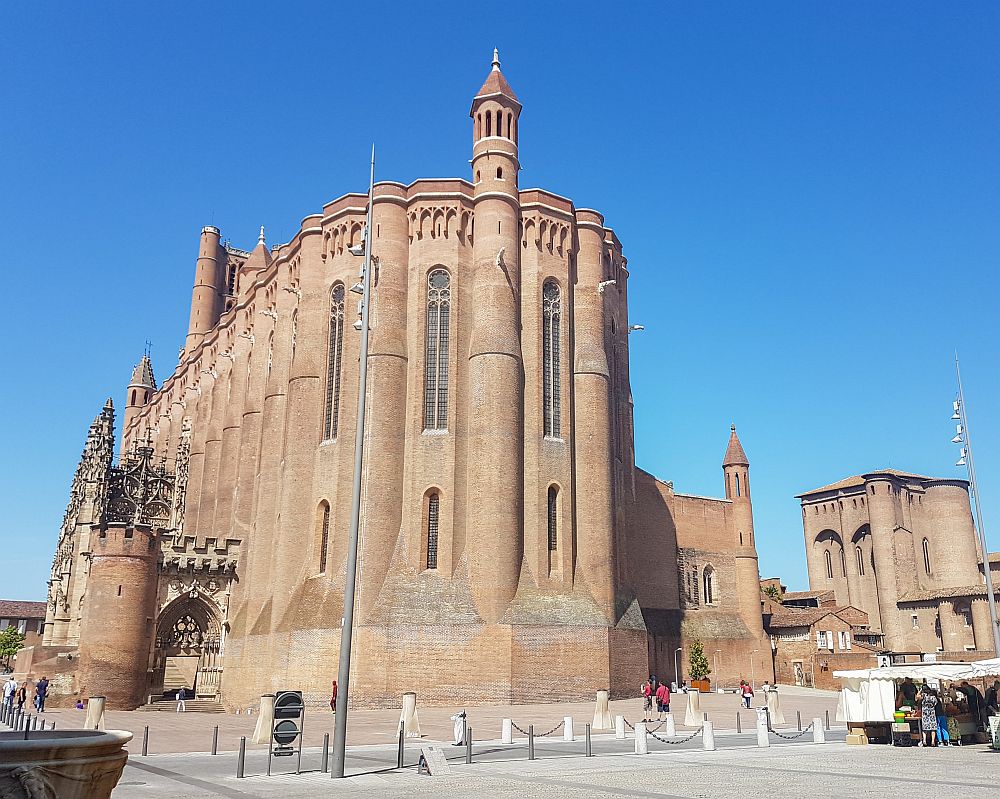
Where is Albi?
The Episcopal City of Albi is located on the Tarn River, in the south of France, within the Languedoc-Roussillon region in Occitanie. Toulouse is the closest major city and main airport hub. From Toulouse, the easiest way to reach Albi is by car or by train.
By Car: From Toulouse, Albi is around 50 miles, and the journey will take approximately one hour. There are multiple parking garages that vary in cost. Parking Vigan is an undercover lot close to the pedestrian area of the medieval city.
Alternatively, from Toulouse you could take a guided tour including transportation.
By Train: Trains run daily from Toulouse Matabiau Station to Albi Ville. The journey time is approximately 65 minutes. Upon exiting the station, the city centre is around a 10-minute walk or 2-minute taxi ride away.
For more information about The Episcopal City of Albi, its opening times, events and tourist pass, see its official website.
Have you been to Albi? If so, do you have any additional information or advice about this UNESCO World Heritage site? Please add your comments below!

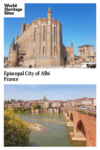
Is the cathedral Roman Catholic or Episcopalian? In the United States, the Anglican Church is Episcopalian.
It’s Catholic. I think Episcopal has to do with it being run by bishops, and the Episcopalian church is derived from that.